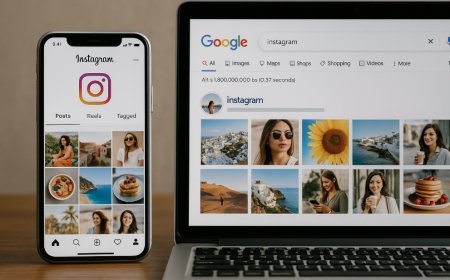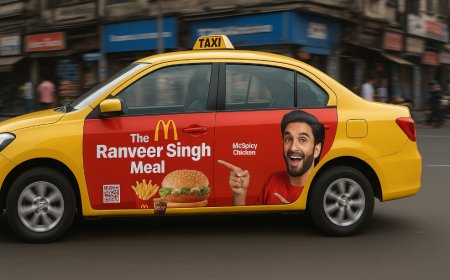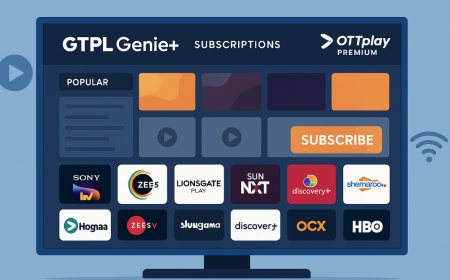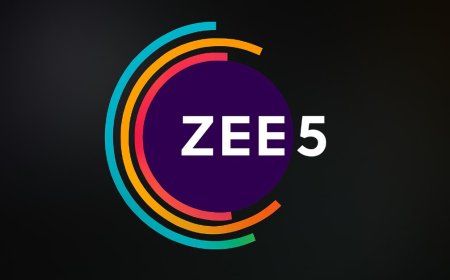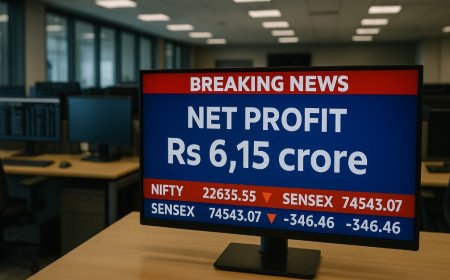Retail Media Goes Mainstream: Why It's Now Central to Every Brand Strategy
Retail media is no longer a niche tactic in India. Industry leaders like Vijay Iyer explain how it’s now a central pillar in brand strategy and performance marketing.

In what was once considered a marketing side stream, retail media has now surged to the forefront of brand strategy discussions in India and beyond. As brands look for new ways to directly reach high-intent consumers, retail media has evolved from a niche channel to a powerful centerpiece in the digital marketing mix.
According to Vijay Iyer, an influential voice in the digital commerce and advertising space, the shift is not just gradual — it’s transformational. Retail media, he argues, is no longer an experiment. It’s a core performance and brand-building engine that marketers can no longer afford to overlook.
What is Retail Media, and Why Does It Matter?
Retail media refers to advertising placed on e-commerce platforms, retail websites, and within physical or digital store ecosystems — including search ads, sponsored listings, display banners, and personalized offers served through shopper data.
Unlike traditional media channels that often work on approximations and broad targeting, retail media connects ads with actual purchase intent at the moment consumers are making decisions. It brings together visibility, context, and transaction potential into a single loop.
And with first-party data becoming the new marketing currency in a post-cookie world, retailers now hold the key to meaningful and measurable consumer connections.
The Rise of Retail Media in India
India’s e-commerce market continues to expand rapidly, and with that comes the exponential growth of digital shelf spaces. Giants like Amazon, Flipkart, Reliance Retail, Tata Neu, and Blinkit are no longer just transaction points — they’re becoming full-fledged media networks.
As Vijay Iyer notes, brands are realizing the advantage of advertising where purchase decisions are being made. Whether it’s an FMCG brand running a campaign on BigBasket or a smartphone company boosting visibility on Croma’s app, retail media offers actionable reach at the bottom of the funnel — something linear media has long struggled with.
This transformation is not just for digital-first startups. Legacy brands are also rewriting their playbooks, allocating bigger chunks of media spend toward retail network activations.
From a Tactical Tool to a Strategic Lever
Retail media initially gained attention as a tactical performance marketing lever—a way to boost visibility during promotions or new product launches. But its growing role in long-term strategy marks a significant shift.
According to Iyer, brands today are integrating retail media into full-funnel journeys. It’s not just about boosting conversions; it’s about:
-
Driving consideration during key decision-making windows
-
Shaping brand preference with targeted storytelling
-
Enhancing loyalty through retargeted offers and personalized messaging
-
Amplifying offline promotions via digital placements
This makes retail media a rare hybrid — blending branding, performance, and commerce all in one.
Data: The Competitive Advantage
One of retail media’s biggest advantages is access to first-party data. Retailers have visibility into what consumers are searching, buying, and browsing — across categories, price points, and timeframes. This allows brands to target audiences with unprecedented accuracy.
Unlike social or display platforms where targeting is largely behavior-based, retail media is rooted in intent. A shopper searching for “sugar-free biscuits” is already far closer to purchase than someone casually scrolling through Instagram.
For brands, this means higher relevance, better efficiency, and clearer attribution. For retailers, it means a new monetization model built on data-driven advertising real estate.
The New Retail Media Playbook
So how are smart brands building their retail media strategies? Here are key trends shaping the space:
1. Full-Funnel Thinking
Instead of seeing retail media as purely bottom-funnel, brands are using it to build awareness, drive discovery, and reinforce loyalty. This includes sponsored brand pages, curated lookbooks, and personalized content recommendations.
2. Cross-Platform Activation
Retail media is expanding beyond e-commerce platforms into connected ecosystems — including CTV, audio streaming, in-store digital displays, and even QR-code-triggered campaigns in physical retail.
3. Creative Experimentation
Gone are the days of bland banner ads. Brands are now designing story-driven creatives tailored for retail media — blending product highlights with shopper motivations and timely offers.
4. Joint Brand-Retailer Partnerships
Collaborative campaigns between retailers and brands are growing, with co-branded content, joint promotions, and exclusive launches becoming common across marketplaces.
Challenges on the Road to Maturity
While retail media offers immense potential, it’s still a maturing landscape — especially in India. Vijay Iyer outlines a few key challenges brands and platforms must address:
-
Measurement fragmentation: Different platforms report performance using varied metrics, making cross-platform comparison difficult.
-
Creative scalability: Designing platform-specific creatives at scale remains resource-intensive.
-
Inventory saturation: As more brands join the race, ad space within retail platforms is getting crowded, requiring sharper strategy and bid optimization.
-
Skill gaps: Many marketing teams still lack retail media-specific expertise, leading to underutilized budgets or inefficient spends.
But these are growing pains of a rapidly expanding ecosystem — not roadblocks. As retail media networks evolve, standardization, automation, and AI-powered tools will likely address these hurdles.
The Future: A Media Channel With End-to-End Influence
Vijay Iyer emphasizes that retail media is not just a channel — it’s a business model. In the future, we’ll likely see retail platforms evolving into full-service advertising ecosystems, offering not just space but also creative, analytics, and commerce solutions.
For brands, this will mean building dedicated retail media teams, leveraging predictive analytics, and creating omnichannel commerce journeys where discovery and purchase are seamlessly connected.
And for consumers? Retail media, when done right, promises less noise, more relevance, and better shopping experiences.
Conclusion: From Side Strategy to Center Stage
Retail media has moved from the margins to the center of brand strategy. As e-commerce grows, consumer behavior shifts, and privacy norms tighten, retail platforms have emerged as the most direct path to the consumer’s wallet — and mind.
For marketers in India, the message is clear: this is not a passing trend. Retail media is here to stay — and it’s only getting stronger.
What's Your Reaction?
 Like
0
Like
0
 Dislike
0
Dislike
0
 Love
0
Love
0
 Funny
0
Funny
0
 Angry
0
Angry
0
 Sad
0
Sad
0
 Wow
0
Wow
0
